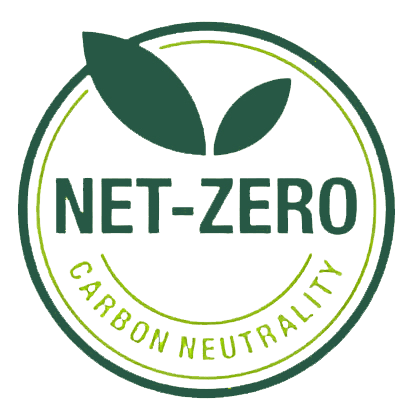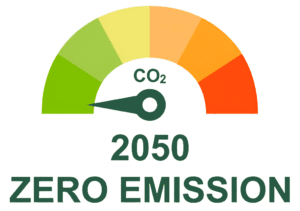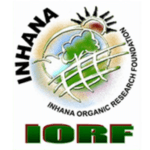
ZERO CARBON AGRICULTURAL MODELS
Agri-Net-Zero Model
Agriculture is a significant contributor to global Green House Gas (GHG) emissions, accounting for up to 24% of the total worldwide, with Indian agriculture contributing 47% and 80% of methane & nitrous oxide emissions, respectively. It has the potential to become a net emissions sink through practices like bioenergy with carbon capture and storage (BECCS).
Agriculture also faces substantial impacts from climate change, absorbing 63% of climate disaster impacts and contributing to 48% of negative land impacts and 70% of water resource issues. Climate change reduces the nutritional value of crops, exacerbating the issue of nutritional deficiency despite food sufficiency in India. Net zero agriculture can enhance farm productivity, save resources, and increase sustainability. Given the significant role of agriculture in both contributing to and mitigating climate change, it is essential to integrate Net Zero Goals within broader strategies to make agriculture and food systems resilient to environmental challenges.
The Clean Food Net Zero programme was conceptualized & initiated by IORF, under the aegis of the Phase II of the seminal IBM-IORF Sustainability Project to establish a tangible transitory pathway from Chemical-Intensive Carbon Positive Conventional Agriculture to a most Safe & Sustainable Crop Production System under its IRF Technology while it ensured both Ecological and Economical Sustainability, it was Adaptable and Affordable for the small and marginal farmers of our country.
The project was conducted in Mandya, Karnataka in about 25 ha area with all major crops of the area generating negative more than 6000 mtCO2e. This is indeed a spectacular and pathfinder for the Net Zero Agriculture as the Carbon Footprint of earlier Agriculture practice which was 470 mtCO2e/ha because whooping – 251.55 mtCO2e/ha. Therefore it is much more than Net Zero rather Carbon Negative – 1st Model of Net Zero Agriculture.

Clean Food Net Zero (CFNZ) Program
The highlight of this Clean Food Net Zero (CFNZ) program is that while delivering Safest Food and Empowering Farmer’s Livelihood, it provides impactful Action against Climate Change in terms of mitigating GHG Emissions worth 251.55 mtCO2e/ha. It is necessary to emphasize over here that an overwhelming majority of this astounding amount of GHG emission mitigation actually consists of prevention of Methane emission (the most dared GHG – as it disintegrates in the atmosphere to release CO2, water vapor and tropospheric Ozone; all of them being hazardous to all terrestrial life forms)from its source i.e. Coir pith (an undiagnosed agri-landfill waste).
Farming is both a contributor to climate change and one of the sectors most severely impacted by it. Agriculture and its allied sectors (AFOLU) are the second-largest emitters of greenhouse gases (GHGs), responsible for about 24% of global emissions, making it both a prime cause and a major victim of climate change. As a fundamental activity, agriculture is crucial to human survival and society, as food is essential for life. Notably, agriculture possesses unique potential for both adaptation and mitigation of climate change impacts. Through ideal soil-plant relationships, agriculture can generate negative emissions and reinstate the sink capacity of the soil, transforming it into a carbon reservoir. The Agri-Net-Zero highlighting the critical role farmers play in reducing GHG emissions while producing healthy, sustainable food that is affordable and adaptable. Agriculture is uniquely positioned to sequester emissions from other sectors, making it an enormous but vital task.
The Relevance of Agri-Net-Zero
The relevance of Agri-Net-Zero is threefold. First, climate change is driven by global warming, which is caused by GHG emissions. Agriculture is uniquely capable of offsetting these emissions directly at the source, possessing both the tools of adaptation and mitigation. Second, unlike other net-zero programs that create carbon-negative points without reducing emissions at their sources, agriculture can have a direct impact on climate change by offsetting GHG emissions, abating Nitrous Oxide (N2O) with 273 times higher GWP, mitigating Methane (CH4), and sequestering carbon in the soil. Lastly, the CARBON FOOTPRINT AND SUSTAINABILITY FOOTPRINT IN AGRICULTURE ARE DIRECTLY & INVERSELY RELATED; a higher carbon footprint implies lower sustainability, and vice versa. Sustainable agriculture is essential for Food Security, Nutritional Security, and Safe Food for the present and future populations. Achieving Agri-Net-Zero with crop sustainability enhances overall agricultural sustainability. In conclusion, Agri-Net-Zero is the only sector capable of restoring the carbon cycle and carbon reservoir mechanism, effectively addressing the critical intersection of Global Warming, Climate Change and Sustainability.


Clean Food Net Zero - The Best Climate Action Model
Methane Mitigation
Addressing methane emissions at the source, contributing to climate change mitigation efforts.
Waste Recycling
Recycling landfill waste into high-quality manure, resulting in a significant reduction of approximately 6340 mtCO2e in the project area of 25 hectares.
N2O Abatement
By replacing artificial N-fertilizers, the model abates N2O emissions, resulting in a reduction of more than 2000 kgCO2e per hectare.
Soil Health Rejuvenation
Featuring a vast self-generated microbial pool of 40 trillion billion, enhancing soil vitality.
Ensuring Crop Sustainability
Leading to a minimum of 10% up to 20% higher yields through increased photosynthetic efficiency.
Carbon Footprint
The model potentially mitigates approximately 13.78 kgCO2e/kg of vegetable produced.
Energy Efficiency
Achieving 432% higher energy efficiency in crop productivity per unit energy investment.
Carbon Sequestration
Through land use change, contributing to C-sequestration with a reduction of -28473.48 kgCO2e in 25.2 hectares.
Circular Bio-Economy
Serving as a model for circular bio-economy, effectively managing hazardous agricultural waste.

Other Agri-Net-Zero Models
Clean Seed Net Zero (CSNZ) Model
Climate Resilient, Suitability under Low input agricultural crop production, SEED (Vegetable Seeds) for Net Zero Crop Production.
Clean Planting Material Net Zero (CPMNZ) Model
This inimitable model can not only be used offsetting Carbon Footprint (leading to the coveted Net Zero status), but also to create a unique and essential imprint in the global value chain of climate-resilient, regenerative Sustainable Organic Agriculture.

Inhana Organic Research Foundation (IORF) is a unique not-for-profit, scientific research based organization that is dedicated solely towards creating pathways that deliver truly tangible sustainability for the marginal and resource-poor farmers of our society.






Quick Links
Get In Touch
168, Jodhpur Park, 1st Floor, Kolkata – 700068

